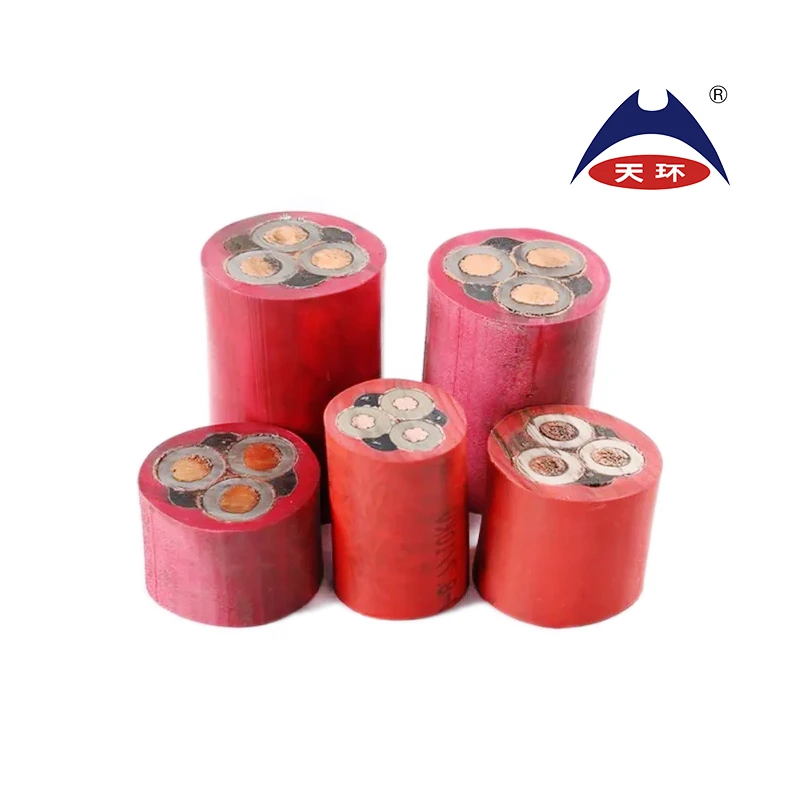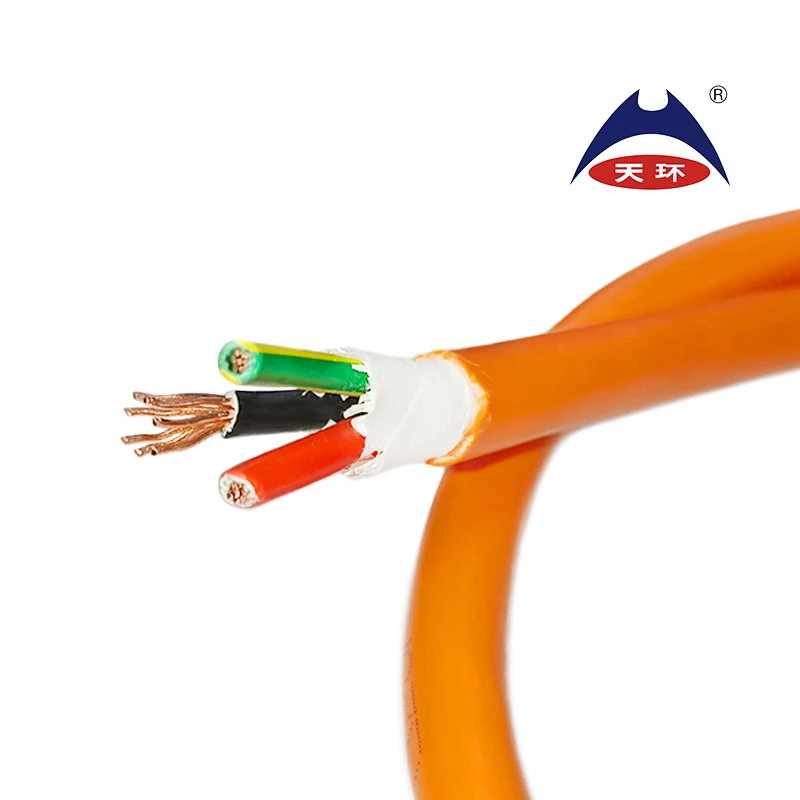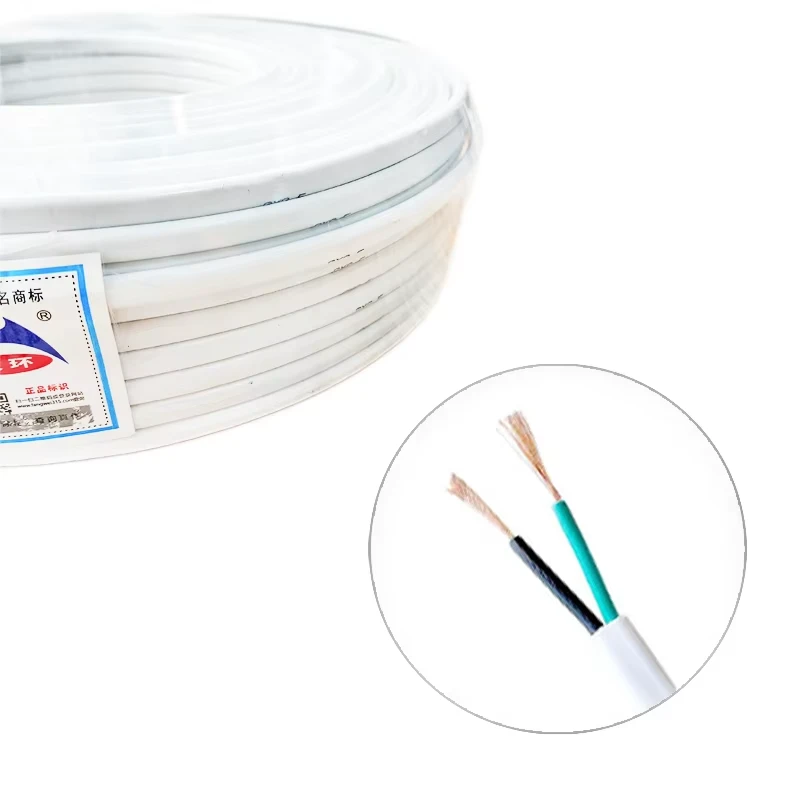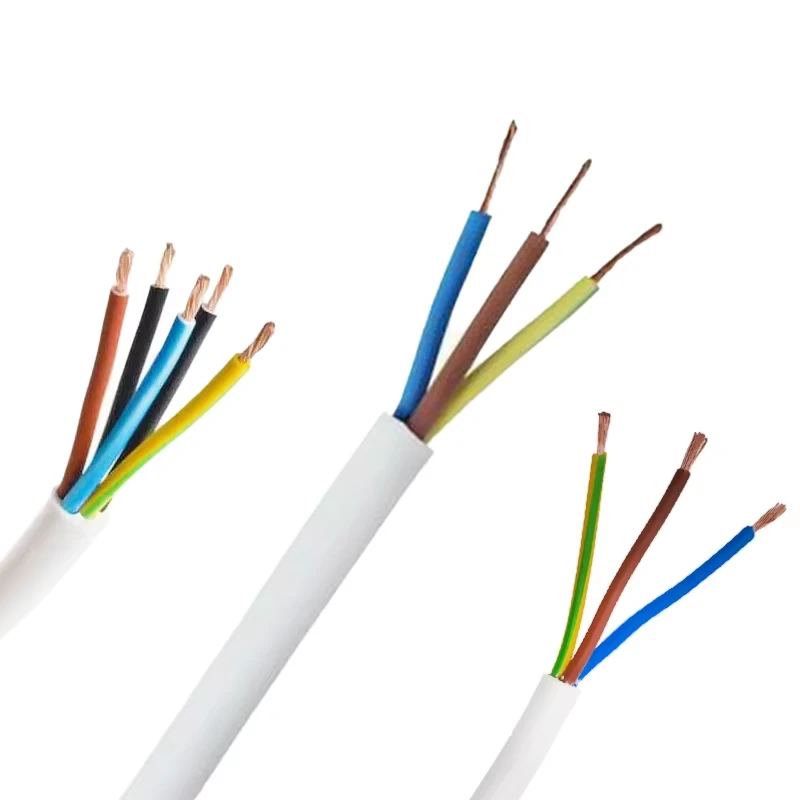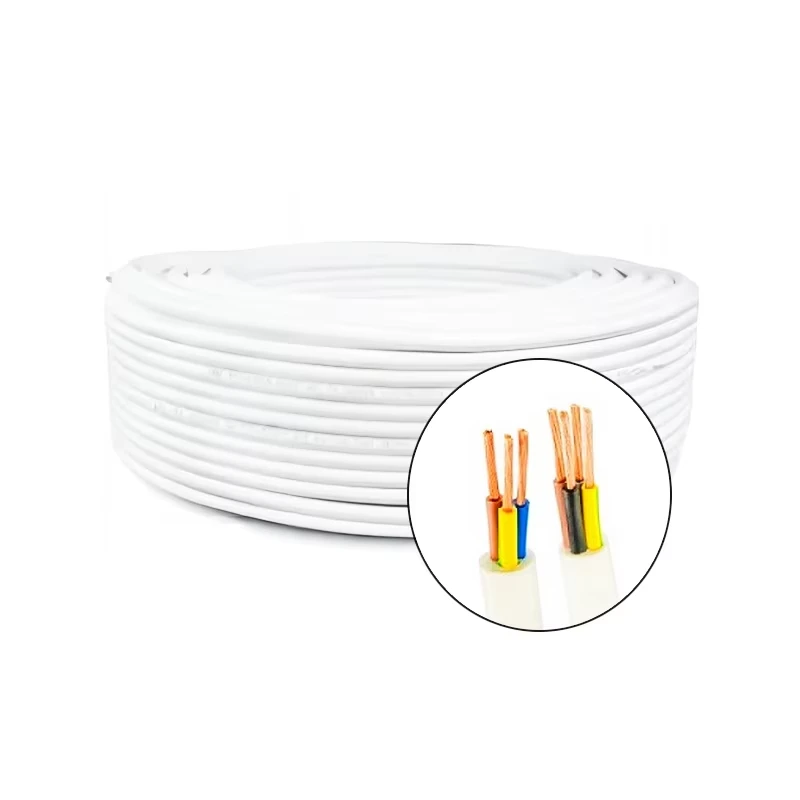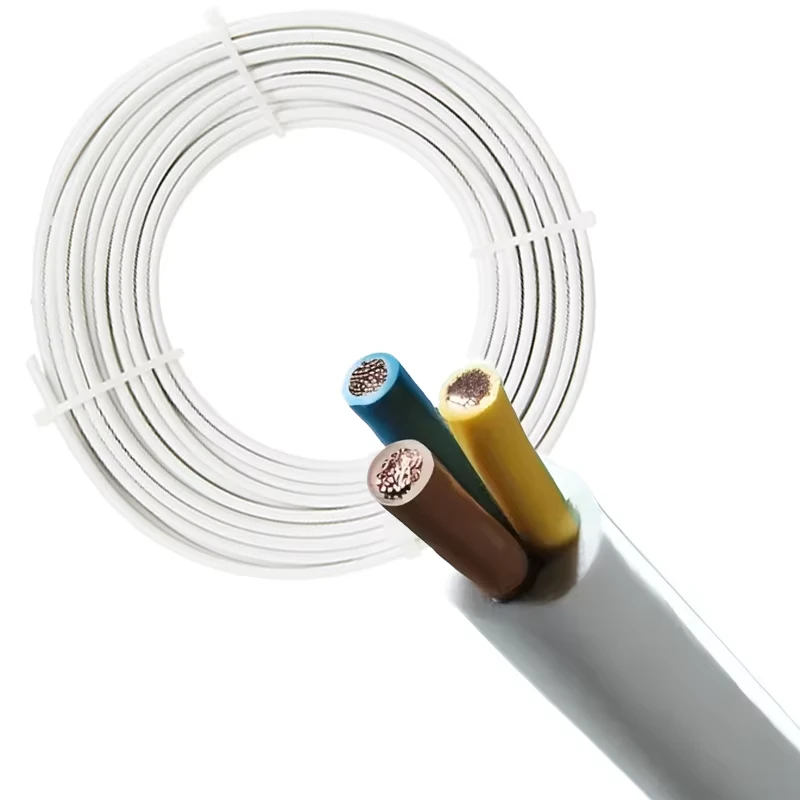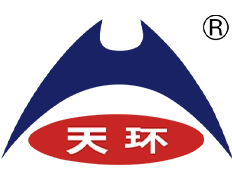
High-Quality 3 Core Cable – Reliable 6 Core Control Cable Supplier & Company
- Introduction to 3 core cable
and its significance - Technical advantages distinguishing 3 core cable
- Comparison of manufacturers: industry leaders and their offerings
- Exploring custom solutions for complex requirements
- Real-world application cases and industry usage data
- Optimizing procurement: choosing the right supplier
- Summary and future trends in the 3 core cable market

(3 core cable)
Introduction: Understanding the Role of 3 Core Cable in Modern Industry
The 3 core cable serves as a backbone component in electrical and automation systems, facilitating safe and efficient power transmission. Its structure—comprising three conductors, each individually insulated—supports consistent voltage distribution and enhanced safety for both commercial and industrial applications. The rising demand in sectors such as manufacturing, infrastructure, and data centers has accelerated the adoption of 3 core cables. Recent market tracking reveals that the global industrial cable market surpassed USD 144 billion in 2023, with multi-core cables contributing nearly 42% to total volume. Among these, the 3 core cable stands out for its versatility, simplicity, and cost-effectiveness, frequently chosen for both low and medium voltage scenarios where reliability cannot be compromised.
Technical Advantages and Features of 3 Core Cable
The technical configuration of a 3 core cable provides numerous benefits, making it a preferred choice among electrical engineers. First, individual insulation around each core minimizes cross-talk and electrical interference, ensuring signal stability even in environments prone to electromagnetic noise. When compared to single-core or twin-core cables, the 3 core variety allows for efficient phase balance in three-phase power systems, supporting consistent operation for high-demand machinery. The addition of a dedicated earth or neutral wire within the third core further enhances system safety, offering protection against electrical faults and leakage currents. Materials such as oxygen-free copper and halogen-free, flame-retardant sheathing significantly boost durability, heat resistance, and fire safety. For control applications, advanced variants like the 6 core control cable product enable intricate connections for automated systems, integrating signals for sensors, actuators, and relays within a single cable assembly.
Industry Manufacturer Comparison Table
| Company | Product Range | Conductor Material | Insulation & Sheath Type | Certifications | Annual Output (km) | Market Regions |
|---|---|---|---|---|---|---|
| TopCable Ltd. | 3 core, 6 core control, custom multicore | 99.99% pure copper | XLPE, PVC, LSZH | ISO 9001, CE, RoHS | 12,500 | Europe, Asia-Pacific |
| KableTech Industries | 2–24 core, 6 core control cable product | Oxygen-free copper, tinned copper | PVC, HFFR, PE | UL, TUV, CCC | 15,800 | Americas, Middle East |
| ControlWire Co. | 3 core, 6–12 core control, armoured | Copper & Aluminum | LSZH, Armoured XLPE | VDE, IEC | 10,200 | Europe, Africa |
Market data indicates KableTech Industries leads in annual output, with a diversified global footprint. Companies such as TopCable Ltd. focus on advanced certifications and high-purity conductor materials, catering to stringent quality requirements. Notably, most top-tier 6 core control cable company players offer customization and adhere to international standards, reflecting a mature, quality-driven supply chain. Distinguishing between vendors on certification, material technology, and product range is crucial for informed procurement and long-term reliability.
Custom Solutions for Specialized Needs
Modern industrial projects often demand cable assemblies tailored to unique requirements, from specific voltage ratings to demanding environmental conditions. Leading manufacturers offer a wide array of customization: conductor cross-sectional area, insulation thickness, sheath composition, and flexibility can be specified based on application. For instance, a 6 core control cable supplier working with the automotive industry may use double shielding and UV-resistant outer jackets for outdoor assembly lines, while another supplier serving healthcare deploys anti-bacterial sheathing and operates within higher voltage tolerances. Digital twin simulations for custom multi-core assemblies further streamline project planning, reducing error rates by up to 17% versus traditional cable system prototyping. Integrating bespoke cables into automation panels, robotics, or data transmission networks ensures optimal signal integrity and longevity under mission-critical demands.
Application Case Studies and Quantitative Impact
Real-world examples highlight the transformative impact of well-engineered 3 core and 6 core control cable solutions across sectors. In a recent automotive assembly upgrade, a global automaker replaced legacy twin-core wiring with high-flex 3 core cables, resulting in a 31% drop in system outages and a 15% cut in maintenance costs over 12 months. Elsewhere, a European utility company implemented 6 core control cables with enhanced electromagnetic shielding, achieving sub-0.02% signal loss in remote relay stations—a marked improvement over previous benchmarks. According to the International Energy Agency, integrated cable solutions have boosted operational efficiency in industrial plants by up to 22% since 2019, underlining the correlation between cable architecture and production uptime. Such case studies reinforce the necessity for targeted cable selection, balancing physical robustness, signal clarity, and regulatory compliance.
How to Optimize Supplier Selection
Choosing a reliable supplier remains a strategic pillar for successful cable integration. Best-in-class vendors provide comprehensive technical documentation, rapid prototyping, and aftersales support. When evaluating a 6 core control cable supplier, procurement teams must assess production capacity, lead time commitments, quality assurance protocols, and the ability to meet region-specific compliance requirements. Supplier audits and sample testing reduce risks tied to substandard batches. Additionally, digital supply chain integration—enabling real-time tracking and batch traceability—minimizes disruption risks and supports just-in-time manufacturing strategies. Establishing supplier partnerships based on transparency, innovation, and proven track records is paramount for both immediate project success and longer-term technology evolution.
Conclusion: Future Prospects of 3 Core Cable in a Connected World
The evolution of 3 core cable solutions, alongside advanced multi-core variants such as 6 core control cables, is accelerating as industries pursue greater automation, energy efficiency, and regulatory compliance. With demand forecasts suggesting a compound annual growth rate of 7.2% through 2030, the pace of innovation is expected to intensify. Continuous improvements in insulation materials, conductor technology, and digital integration will define the future, with smart cables featuring embedded sensors and data analytics on the horizon. Selecting the optimal supplier and customizing cable solutions remain foundational to achieving operational excellence in dynamic industrial landscapes. In conclusion, the 3 core cable serves as both a proven standard and a platform for future-ready infrastructure, providing a secure, scalable, and intelligent backbone for tomorrow’s connected world.
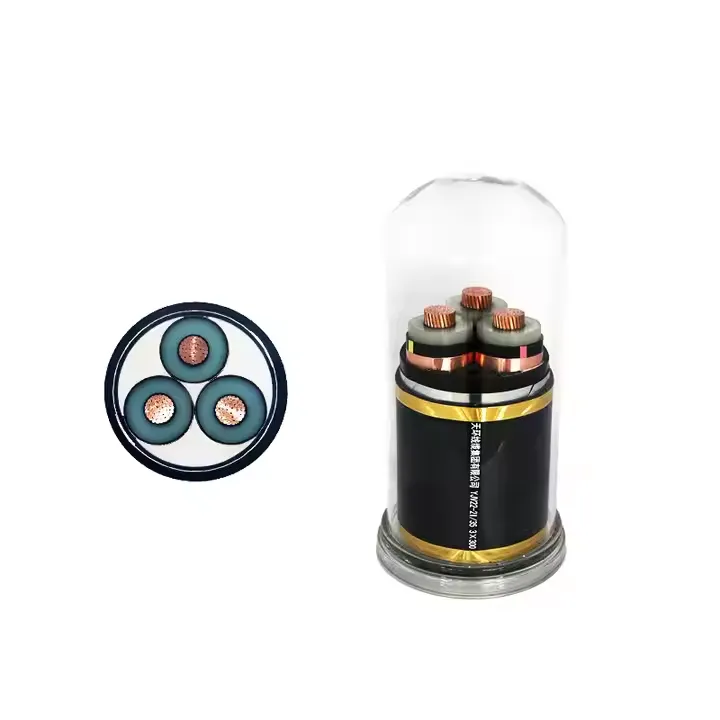
(3 core cable)
FAQS on 3 core cable
Q: What is a 3 core cable used for?
A: A 3 core cable is typically used for electrical wiring where earth, live, and neutral wires are required. It is commonly found in domestic and industrial power installations. The three cores provide safety and efficient power distribution.Q: What makes a 6 core control cable product different from a power cable?
A: A 6 core control cable product is designed for transmitting control signals, not just power. It is often used in automated systems to connect control panels and machinery. Its multiple cores allow for several signals to be carried simultaneously.Q: How can I choose a reliable 6 core control cable company?
A: Look for a company with industry certifications and a proven track record in cable manufacturing. Reviews and client references also indicate reliability. Always check if their products meet international quality standards.Q: Where can I find a trusted 6 core control cable supplier?
A: Trusted suppliers can be found through industry directories, trade shows, or online platforms specializing in electrical equipment. Verify their credentials and request product samples if possible. A reputable supplier offers transparent product specifications and support.Q: What are the main benefits of using a multi-core cable like a 3 core or 6 core cable?
A: Multi-core cables save space and simplify installation by combining multiple wires into a single jacket. They reduce electromagnetic interference and enhance organization for complex wiring needs. These cables are ideal for both power distribution and control applications.-
control-cable-that-reliable-signal-transmission-for-industrial-automationNewsAug.23,2025
-
innovations-in-overhead-power-cables-that-enhancing-grid-resilience-with-advanced-aerial-constructionNewsAug.23,2025
-
building-wire-that-reliable-electrical-solutions-for-residential-and-commercial-spacesNewsAug.23,2025
-
xlpe-electrical-cable-that-reliable-power-solutions-from-tianhuan-cableNewsAug.23,2025
-
ethylene-propylene-rubber-cable-that-durable-solutions-from-tianhuan-cableNewsAug.23,2025
-
photovoltaic-cable-that-reliable-connectivity-for-solar-energy-systemsNewsAug.23,2025
-
Reliable LIYCY Cable Solutions for Low and Medium Voltage ApplicationsNewsJul.14,2025





